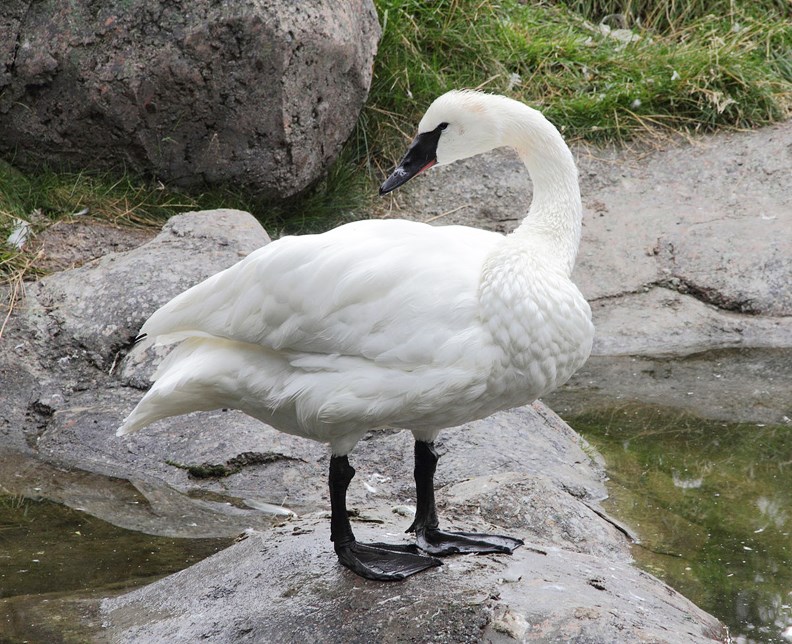We are now settled into the winter birding regime on the Sunshine Coast with the last of the summer visitors departed and all of our wintering species in place. This does not mean that stasis has been reached, as there are still bird movements going on.
November, for example, is the month when significant numbers of swans are seen overflying the Sunshine Coast en route to their wintering grounds in the Fraser Delta. A few swans even touch down here and can be periodically observed on almost any body of (usually) fresh water such as Trout Lake, Garden Bay Lake and even small ponds on all of the local golf courses.
Almost all of the birds are trumpeter swans, with only the occasional tundra swan. The two species are difficult to tell apart with minor differences in markings on the bill as the main indicator.
Local birders concentrate their efforts at this time of the year on the waters of the Salish Sea, as there are a huge numbers of waterbirds of a wide range of species present. These birds visit us and our mild winter climate to escape the ice bound lakes and wetlands of interior and northern Canada.
Consequently, a half hour spent at Mission Point or the Roberts Creek jetty can easily produce 30 to 40 species of loons, grebes, cormorants, ducks, geese, swans, gulls, alcids and shorebirds. Among the large numbers of common species there is always the possibility of a rarity such as an eider duck, a yellow-billed loon or a rare gull or alcid. There have even been a couple of sightings of brown pelican in November.
In early winter Mission Point usually has huge flocks of gulls roosting on the shoreline at lower states of the tide, with 2,000-plus birds present. Gull identification is not for everyone and is a challenge even for experienced observers, as the adults of all the species come in varying and often slight variations of grey and white. In addition, there are myriad and confusing juvenile and sub-adults as most gulls take three to four years to attain their adult plumage. Also, gulls have a basic winter plumage and moult into a different breeding plumage.
With practice (hundreds of hours?), experienced observers can weedle out the nuances of size, head shape, bill, leg and eye colour, and sub-adult plumage to arrive at a diagnosis of the species. This challenge is something of a Rubicon in birding circles with some choosing to cross it and others lapsing. There are about 20 species of larids (gulls) on the Sunshine Coast checklist.
To report your sightings or questions contact [email protected] or 604-885-5539.
Good birding.



